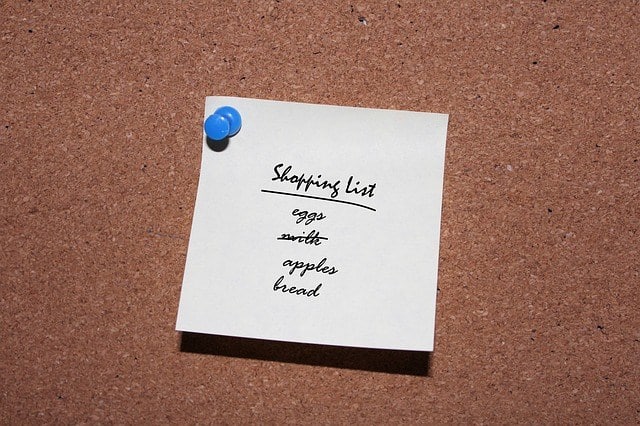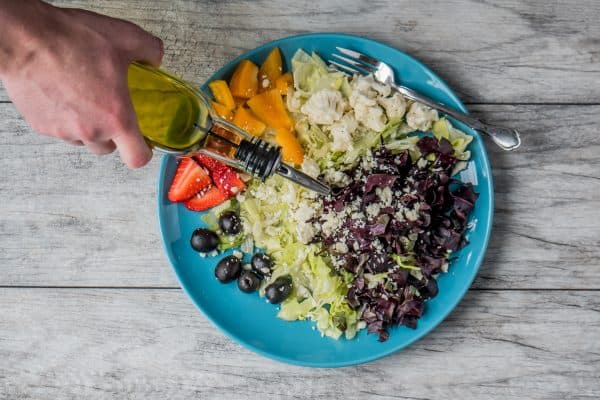Are you looking for ways to save money on groceries but think you’ll have to settle for eating boring, tasteless food? Well, I’m here to tell you that’s not the case. It’s entirely possible to eat well on a budget and it doesn’t have to be bland and boring. You just have to get a little creative and be prepared to plan ahead. Here are my top 15 tips for eating well on a budget.
1. Take Advantage Of Sales;
Scan the store flyers and coupon apps. Knowing what’s on sale can help you save money at the checkout. Check the flyers weekly and shop at the store that has the most sales on items you want or need. Which brings me to tip number 2.
2. Plan Your Meals;
Creating a weekly meal plan is a great way to save money on food but if you can plan it around what’s on sale that week you can save even more. Try to plan meals and snacks with overlapping ingredients to maximize savings and avoid food waste. For instance, if you know you’ll only need half of an item for 1 dinner, try to plan another dinner or lunch that will use the other half. Also, try to use produce that’s in season as it’s usually cheaper. Once you’ve completed your meal plan, make a grocery list of all the items you need. Make sure to check your cupboards, fridge & freezer first so you’re not duplicating any items.
3. Use Economical Cuts of Meats;
When creating your meal plan consider using less expensive cuts of meat. For example, use chicken thighs instead of breasts. They not only are cheaper but stay moister and have more flavour than breasts. Some other economical cuts are pork shoulder, chuck roasts, flank steak, etc… These cuts are often tougher so benefit from marinades and braising or slow cooking to tenderize the meat. They are also great used in soups, stews and casseroles.
4. Go “Meatless” A Couple Of Days A Week;
Meat is one of the more expensive grocery items so eating less of it is an easy way to save. Legumes and pulses are a great source of protein and can be added to a lot of dishes as a replacement for meat. Try adding beans or lentils to soups and stews or even salads (like this tasty Tuscan Tuna Salad). They also have a long shelf life so can be bought when they’re on sale and stored. Beans can also be used to “bulk up” meat dishes. Adding beans to a stew or chilli will help spread it out a little farther. And while canned beans are quite inexpensive, dry beans are even cheaper so cooking them yourself will save you even more. Another idea for a “meatless” night is to have an omelet night. Prepare a toppings bar and let everyone choose their own fillings. Add a salad and you’ve got an easy and healthy weeknight meal.

5. Stick To Your Grocery List;
Take your list to the store with you and don’t deviate from it (unless it’s an exceptional deal on something you can store and use later). Resist the urge to purchase those impulse items. Use a pen to cross off each item as you put it in the cart so you don’t miss anything. And never grocery shop when you’re hungry.
6. Buy Items On Sale;
As stated above, the only exceptions to the items on your grocery list should be those that are on sale. Buy “sale” items in bulk & freeze (or store) them. Things like beans, pulses, pasta and frozen foods have a longer shelf life so are great for buying when they’re on sale and storing for later. Also, and this is one of my favourites, fresh meat and fish can be expensive items but when they are nearing their “best by” date stores will often mark them down by up to 50% and label them “use today”. This is a great opportunity to save on meat and fish and either cook them that night or put them in the freezer for another day.
7. Buy Generic Brands;
Don’t be afraid to try generic brands. Studies are showing that a lot of generic brands contain the same (or nearly the same) ingredients as the name brands. However, if you’re wary, it’s always a good idea to read the ingredients to make sure.
8. Buy Whole Foods;
A block of cheddar cheese is cheaper than a bag of shredded cheese. Grating it yourself will only take a few minutes & you’ll save money. Same goes for lettuce and prepared bagged salads and vegetables. You’re paying for the convenience so save the money and chop and wash your own salad.
9. Buy Frozen Fruits And Vegetables;
Most fruits and vegetables are flash frozen at the source so are usually just as nutritious as fresh produce. And the added bonus is you can take out just what you need and keep the rest in the freezer avoiding food waste.
10. Shop At Ethnic Markets;
If you live in a larger city, try shopping at ethnic markets. Ethnic markets usually have lower prices for a lot of items and if you like to cook different cuisines you’re better off getting the ingredients you need at a market that specializes in that cuisine and it will probably be cheaper too.
OTHER TIPS;
11. Track Your Food Spending;
Documenting can help you understand where you spend your food money and where you can make changes.
12. Pack A lunch;
Eating out is expensive and making lunch can be easy if you plan ahead. Cook larger portions of dinners and package up a portion for lunch the next day. Or make a big pot of stew, soup, pasta, etc… on the weekend and package it for lunch or even dinner throughout the week. That way if you come home late one night you can always pull it out of the freezer instead or reaching for the pizza delivery menu.
13. Make Your Own Salad Dressing;
It’s so easy and not to mention much healthier as you’ll avoid all those preservatives. All you need to do is mix up some olive oil, vinegar, salt & pepper and maybe some garlic if you want. Store bought dressings will cost you at least twice as much as homemade and you probably already have all the ingredients in your cupboard.
14. Follow A “No Waste” Policy;
Try to use everything that comes into your kitchen! Almost anything can be frozen so there really is no excuse for waste. Use meat and poultry bones and vegetable scraps to make broth. Save bones and carrot tops, onion and celery ends, herbs & other vegetable scraps in a Ziploc bag in the freezer until you’re ready to use them. Then just throw the contents of the bag in a pot, cover with water and boil to make a stock. You can freeze unused juice from cans of tomatoes in ice cube trays and use it to cook rice as well as add to stews and pasta. Wilting fruit and veggies can be added to smoothies and used to make juices. And don’t throw away that stale bread and those crusts. They’re great seasoned and baked to make croutons for salads.
15. Grow Your Own Produce;
And finally, if you have the room and time, planting your own vegetable garden is a great way to save money. Seeds are inexpensive and with a little care, you can harvest a great bounty from them. Just imagine picking fresh tomatoes, lettuce, zucchini, and other vegetables directly from your backyard instead of having to buy them at the store.
Credit: Source Link

